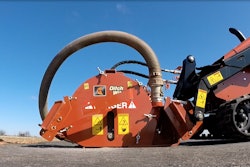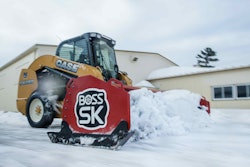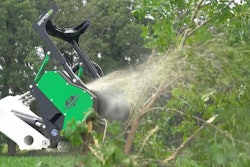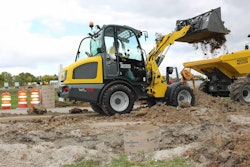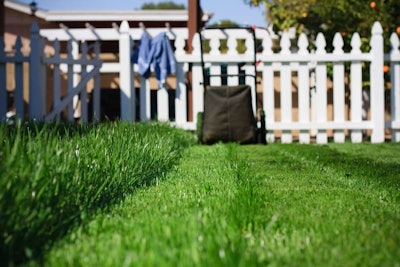 Photo: sean hobson/Flickr
Photo: sean hobson/FlickrIn the summer of 2010, undergraduate and graduate students working as part of Clark University’s Human Environmental Regional Observatory (HERO) Program interviewed homeowners in Ipswich, Massachusetts, to try and better understand the social, political and economic contexts surrounding the use of water and fertilizer.
At this point, the state had been in a long-time drought, and the program sought to better understand the changing climatic and social dynamics of homeowners and their lawns. The work for this study built off previous studies done by Paul Robbins for his book Lawn People.
“Our work, which discusses complex emotions in relation to yards and lawn care, was exploratory and based on a small number of interviews, in order to posit heuristic models of types of emotions,” says Deborah G. Martin, professor and director at Clark University. “For the part of the project I was involved in, we were trying to better understand the range of factors that influence yard care and choices. We found the literature, such as the Lawn People book, provocative and wanted to explore more.”
Questions asked
During the interview and data collection process, students discussed five sections with the homeowners before arriving at the final conclusions.
“We asked several questions relating to the ways in which people manage and take care of their yards and lawns, and the factors going into their decision-making processes when thinking about yard management,” Martin says.
Section one regarded yard care management and asked the following questions:
- Who takes care of your yard and why?
- How did this situation come about?
- Why is your yard maintained the way that it is?
Section two regarded yard care education and asked the following question:
- How did you learn to take care of your yard?
Section three regarded yards in neighborhoods and asked the following questions:
- Are there certain yard types, uses, appearances and yard management options that are more or less acceptable to you or other people?
- If so, who shapes these views of “acceptability,” whether environmental friendliness matters?
Section four regarded neighborhood character and asked the following question:
- How would you describe the character of your neighborhood?
The final section regarded yard ideals and preferences and asked the following questions:
- How does your yard reflect your own personal ideals and preferences, or how does it not?
- If not, what is your ideal yard, and how do, if at all, environmental issues matter?
Results
The study was part of two larger studies, according to Martin. The first study dealt with yard care trends and the second was about land cover choices and changes in Massachusetts. Students conducted the data collection over eight weeks during that summer.
After the interviews were conducted, the results showed that the homeowners fell into one of three categories when it comes to their lawns: the diversifier, the lawn maintainer and the reformer.
The diversifier eschewed the grass carpet for a yard teeming with diversity and incorporated vegetable, herb and flower gardens, trees, shrubs and grass. They also tended to add gravel or paving for texture. Trellises, patios and sheds were usually found in this yard, along with a compost bin and brush pile. Results regarding the diversifiers showed that they enjoyed and took pride in the yard, because it was a place to be creative, spend time and gain therapeutic benefits.
The lawn maintainer expressed anxiety and resentment over a perceived need to nurse a perfect grass carpet. However, some maintainers embraced the rituals of carefully tending to their grass.
The reformer fell on the scale between the diversifier and lawn maintainer. Reformers were classified as someone who wanted to reduce lawn size and diversify the yard, but lacked the time, money or knowledge to do it. These homeowners were uncertain and overwhelmed, and had mixed emotions about using too much water and fertilizer or employing landscapers.
How landscapers can help
For those who fell into the category of reformer, Martin suggests that landscapers could offer help. A few ideas Martin gave were for landscapers to provide information about the basic ecology of the lawn, talk to customers about how to create spaces within and around that allow for different care regiments and also consider offering smaller scale services that might be more affordable.
By offering such services, Martin says more people would potentially feel like less of a “failure” to their neighborhood if they did not want to or could not buy a full service package.
“People want to be able to experiment or have suggestions that aren’t super expensive or require a lot of labor,” Martin says. “I think these folks want a lawn care service which can understand and help with that, and that is willing to have a contract that isn’t all the bells and whistles but is a cooperation over time.”
As for the group of lawn maintainers who continually kept up the task of maintaining their lawn whether they wanted to or not, Martin says there was and is still today a social aspect that played a huge role in the findings of this group in particular. This social aspect, the group concluded, is what drove maintainers to go against their own wishes and pursue the upkeep of a lawn they may not even have wanted or cared about.
“Our work and that of people like Paul Robbins establishes that there are huge social norms around how a lawn looks,” Martin says. “That’s hard to fight against. Maintaining a lawn is perceived to be a responsibility of a homeowner. Industries/business sectors like fertilizers and home/yard care retailers foster this perception. There are literally books devoted to this question.”
Martin says that even though the initial results were taken in 2010, there are certain aspects of the study, such as research agendas and projects that relate to the work, that are currently ongoing.

